Four years ago, on June 30, 2010, the American Civil Liberties Union filed a lawsuit on behalf of ten individuals (later joined by three more similarly situated persons), all of them U.S. citizens or lawful permanent residents, who had been denied travel on commercial airlines because they believe, or have been informally (but not officially) told, that they were on the U.S. government’s “No-Fly List.” Despite their ongoing efforts, they could not learn why they had been banned from air travel and classified as terrorists, nor could they find any remedy for their situation. Indeed, the government refused to tell them anything.
They were and are not alone. As the ACLU action states: “Thousands of people have been barred altogether from commercial air travel without any opportunity to confront or rebut the basis for their inclusion, or apparent inclusion, on a government watch list known as the ‘No-Fly List.’”
On June 24, 2014, four years later, U.S. District Court Judge Anna J. Brown in Oregon has ruled the government’s actions regarding these thirteen plaintiffs—not to mention others—are unconstitutional. This, and following columns in this three-part series, will examine how the federal courts are addressing the processes created in the aftermath of 9/11, and determining whether, in the government’s effort to curb terrorists, it has taken away fundamental rights of Americans. These columns focus primarily on the process of creating and maintaining government watch lists. Because this problem is far from solved, and these lists are far more extensive than the No-Fly List, not to mention that getting listed can happen to anyone at any time, this will be a multi-part column.
Is Watch Listing a Resurrection of Blacklisting?
Those of my generation (and older) remember the terrible stench that this country experienced during the so-called “McCarthy era,” when many Americans were unfairly and falsely tarnished if not ruined because they were believed, with or without reason, to be Communists. Blacklists first developed from investigations undertaken by the notorious House Un-American Activities Committee, which called witnesses and demanded to know whether they were or ever had been members of the Communist party. Since such an allegiance could be a crime, many witnesses were reluctant to talk, particularly about friends. Yet invoking one’s Fifth Amendment right against self-incrimination was tantamount to admitting such affiliation.
Blacklisting soon spread throughout the movie, radio, and television industries, and accompanying this practice there soon developed loyalty and security programs that affected literally millions of Americans who were required to take oaths, provide loyalty statements, and pass security clearances to make certain a person was not a Soviet agent or Communist sympathizer. Such programs were a prerequisite to employment in and out of government. For example, a person could be dismissed from government service if there were “reasonable grounds . . . for belief that the person involved [was] disloyal to the Government of the United States.”
University of Toledo College of Law professor Daniel Steinbock examined this history in a 2006 essay, “Designating the Dangerous: From Blacklists to Watch Lists.” Strikingly, he found the No-Fly List is but one of many lists now employed by the government. And as compressive as his collection maybe, even it may not be complete because there are secret watch lists as well. Here are some twelve watch lists professor Steinbock found had been openly created and are maintained by a number of federal departments and agencies.
- The State Department’s Bureau of Consular Affairs has a list called “Consular Lookout and Support System” and its Bureau of Intelligence and Research has a list called “TIPOFF.”
- The Department of Homeland Security, which also runs U.S. Customs and Border Protection, has a list called the “Interagency Border Inspection System” and DHS also runs TSA which enforces the “No-Fly List,” which as we will see is prepared by the Department of Justice’s FBI, along with a general “Watch List.”
- The Department of Homeland Security also operates the U.S. Immigration and Customs Enforcement, which maintains the “National Automated Immigration Lookout System” and the “Automated Biometric (fingerprint) Identification System.”
- The Justice Department’s U.S. Marshals Service has a list called the “Warrant Information Network.”
- The FBI, in addition to their master watch list and No-Fly List, has a list called “Violent Gang and Terrorist Organization File,” along with the “Integrated Automated Fingerprint Identification System.”
- The Justice Department also operates the U.S. National Central Bureau of Interpol which has the “Interpol Terrorism Watch List.”
- Finally, the Department of Defense, and the U.S. Air Force, maintains a “Top 10 Fugitive List.”
Professor Steinbock’s essay makes a strong case that today’s watch listing practices have too much in common with yesterday’s blacklisting, and we seem to have forgotten an important history lesson. “The blacklisting and loyalty-security investigations of the McCarthy era are now widely viewed as, if not completely unnecessary, at least wildly over inclusive and trenching on First Amendment and due process rights,” Steinbock reports. And he cautions with today’s watch lists: “All of this amounts . . . to a net cast so widely that it catches many, many dolphins along with, perhaps, a few sharks.”
Drawing on a body of constitutional law that was, in part, shaped by this “McCarthy era” history, Judge Anna Brown’s ruling recognizes the problem, and she has instructed the government to come up with a solution. This decision may be a step toward preventing the ever-expanding watch listing of our digital era from repeating an unfortunate and ugly history in an even more egregious manner.
Overview of the No-Fly List
The ACLU’s lawsuit, Latif et al v. U.S. Dept. of Justice et al., flushes out about as much as can be learned about the current super-secret watch listing that has produced the No-Fly List. It strikes me as a process that could have been designed based on Franz Kafka’s work, for it is truly something of a diabolical bureaucratic beast. (See, e.g., The Trial.) In this column I am going to look at how the No-Fly List is created, for I suspect it is to some degree representative of how all the current lists have come to life.
Deep within the FBI’s labyrinth can be found an organization known as the “Terrorist Screening Center” (TSC), which develops and maintains the federal government’s consolidated Terrorist Screening Database (TSDB, or sometimes the ACLU notes is also known as “the watch list“). The No-Fly List is a subset of this master consolidated watch list. The TSC does not administer the Terrorist Screening Database; rather it provides the No-Fly List to Transportation Security Administration (TSA), which is part of the Department of Homeland Security (DHS), this No-Fly List to pre-screen airline passengers.
Anyone Can Be Placed on the No-Fly List
President George Bush II’s attorney general, John Ashcroft, a man not known for his sensitivity for civil liberties, first created the Watch list and its sibling No-Fly List in 2003, and soon thereafter horror stories began surfacing of Americans discovering their names were on the list, although they had nothing whatsoever to do with terrorism or anything else that would remotely qualify them being banned from air travel. When that happened, in most cases, that air traveler was largely without remedy, which I will address shortly in the next column.
One of the more newsworthy examples of persons inexplicably ensnared by this process surfaced when the late Senator Edward “Teddy” Kennedy (D-MA) was prevented from boarding flights on five occasions by airline personnel who refused to give him a ticket because he was on the No-Fly List. Of course, when you are one of the most powerful members of the U.S. Senate you can get problems like that taken care of, by no less than the head of the Department of Homeland Security—but it took weeks to accomplish, and ultimately resulted in TSA handling pre-screening, rather than airline personnel, who could not be trusted with a fully classified No-Fly List that made it easier to distinguish people with the same name. As the New York Times later reported, a suspected terrorist on the No-Fly List used the alias “Edward Kennedy.”
As “60 Minutes” pointed out in 2006/2007 broadcasts, countless Americans have found themselves on the No-Fly List. For example, they found people with names like Gary Smith, John Williams, or Robert Johnson were having problems. They located 12 Robert Johnsons and brought them to New York for an interview. These men had absolutely no connection with terrorism but could not get on a commercial flight without a major hassle because a terrorist suspect had once used the alias Robert Johnson.
More troubling was the “60 Minutes” report on how the names had been initially compiled for lists. They had a copy of a then-current Watch list, where they found 75,000 names, and a No-Fly List, which had 44,000 names. Based on interviews of people who had been involved in creating the lists, they learned that names had been placed on these list by dumping them there on the slightest pretext, with the criteria being CYA if there is any possibility a name might be connected with terrorism. Notwithstanding efforts to clean up these lists, they clearly have remained deeply flawed. For example, “60 Minutes” found the list had dead people, including 14 of the 19 terrorists involved in 9/11 attacks, the head of the Lebanese parliament who had recently met with Secretary of State Condoleezza Rice, and a head of state, the president of Bolivia. It is little wonder, given the vague criteria for adding names to the list.
The 2010 ACLU lawsuit discussed above shows the early problems that plagued the No-Fly List have never really been fixed—for several reasons. First, the government—until now—has pretty much been completely unaccountable. Second, there has been no real remedy for a person improperly placed on the list. And finally, the criteria is extremely vague—and still publicly unknown—about who should be placed on the No-Fly List.
The Vague Criteria for No-Fly Nomination
After the initial name dump reported by “60 Minutes” to create the watch list, a criteria was developed for agencies of government to nominate candidates for addition to the Terrorist Screening Database—the master watch list. It is necessary to start with the watch list because the No-Fly List is drawn from it, and the No-Fly List criteria are classified and remain unknown to the public.
Here is the way it works. The FBI’s Terrorist Screening Center receives nominations for inclusion in their watch list database and it generally accepts that name on a showing of “reasonable suspicion” that the individual is a “known or suspected terrorist based on the totality of the information.” More specifically, the TSC defines its reasonable-suspicion standard as requiring “articulable facts which, taken together with rational inferences, reasonably warrant the determination that an individual ‘is known or suspected to be, or has been engaged in conduct constituting, in preparation for, in aid of or related to, terrorism or terrorist activities.’” Got that?
Clearly, as Judge Anna J. Brown noted in her ruling, citing other courts that have looked at his standard, “The reasonable suspicion standard is not a particularly high threshold to reach.” She notes that while the reasonable suspicion requires more than a mere hunch, the evidence available “need not rise to the level required for probable cause, and falls considerably short of satisfying a preponderance of the evidence standard”—evidentiary levels well established by law. So it is a very low standard for a name to be added to the terrorism watch list, and it appears it is not a much higher standard to be placed on the No-Fly List.
The government told Judge Brown it had a document it calls “Watchlisting Guidance” for internal law-enforcement and intelligence use, but that information is not made public. Judge Brown explained the government has “its own minimum substantive derogatory criteria” for being placed on the No-Fly List, which is secret. But Judge Brown was provided this information. “The Court has reviewed the minimum substantive derogatory criteria for the No-Fly List and a summary of the guidelines contained within the Watchlisting Guidance submitted to the Court by Defendants ex parte and in camera.” Because the information was classified “Sensitive Security Information,” Judge Brown did not mention it anywhere in her ruling. But clearly she was unimpressed with it.
When we resume this discussion I will examine what we can learn from Judge Brown’s ruling, and what her ruling suggests, if anything, for the myriad watch lists being created by government.







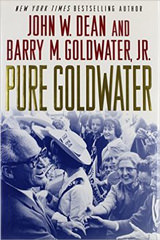
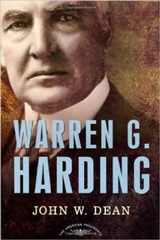
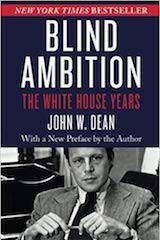
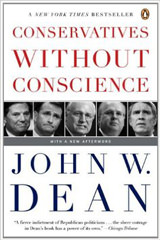
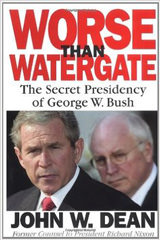
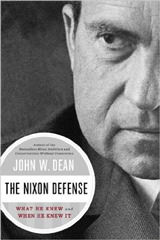
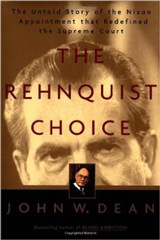
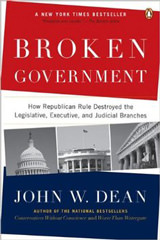
gads, am i glad my parents gave me an atypical name! while this article is about constitutional law, the subject should more appropriately be called human rights law! with near-daily reports of terrorist acts and news about the islamist aim of converting the world to its version of islam, nobody in his right mind objects to keeping lists of people to watch out for. but for such list-keeping to be without a mechanism for those listed to challenge their listing is positively unamerican!
If you read the column carefully, you would not feel so much confidence in your odd name. In fact, the real or potential terrorists might find it better to claim your “atypical” name to take advantage of your existing identity, especially if you do travel often. Since the bad guys are routinely treating aliases as disposable resources, it certainly wouldn’t matter to them if they destroyed your personal reputation, but the authorities who might be checking the suspicious names against the various secret lists could easily over-jump to the conclusion that there can’t be two people with such a name. Since you’ve never done anything problematic, the nasty guys could almost count on being waved through if they can poach a bit of your identity…
interesting point, shanon! well, then, i’m glad my traveling days are over! :-)
Thanks John, We are all curious to know how this decision affects ‘non-citizen U.S. nationals’ and others who might have no legal nexus to the de-facto terrorist entitites of the U.S. corporation out of D.C. Under natural law one man can not impede the travel of another, without just cause.
I think it might be better to rename them “Thought crime lists”. If these people had actually performed some criminal act, then they could be arrested, but all we have is someone who thinks the listed person might be thinking about committing a crime. Insofar a restricting freedom of movement is a form of punishment, we are punishing them on someone’s thought that the person might have criminal potential. This is really sick and twisted and downright un-American–or do I deserve to be listed for having that sick thought?
The One Percent Doctrine by Ron Suskind helps explain the minimalism in the inclusion criteria. Part of the big dick Cheney’s insane remorse or remorseful insanity? Or just the entry point for more dangerous thoughts about conspiracies against journalists? Was Ron Suskind’s child actually poisoned? Should I believe that Michael Hastings car electronic control system was hacked and converted into the weapon for his murder? Oh wait. Saying such things in public may be enough to get me listed, eh?
There is a solution, but it sounds like a joke. Sorry, but I’m certain it is not the American legal system and especially not the Supreme Court (of political hypocrisy, which most recently denied normal citizens ANY personal buffer of protection in the name of Free Speech not long after ruling they deserve an enormous ‘judicial’ buffer around their own building). The solution would actually involve that silly old Bill of Rights. I should be allowed to exercise the rights to protect my personal information, and even to hold it under normal circumstances. As it ought to apply here, I want to know WHICH lists I’ve been included on, and why. As noted, expecting that kind of information now sounds like a joke. I can’t even find out what the EVIL google is holding against me (after several years of pursuing it).